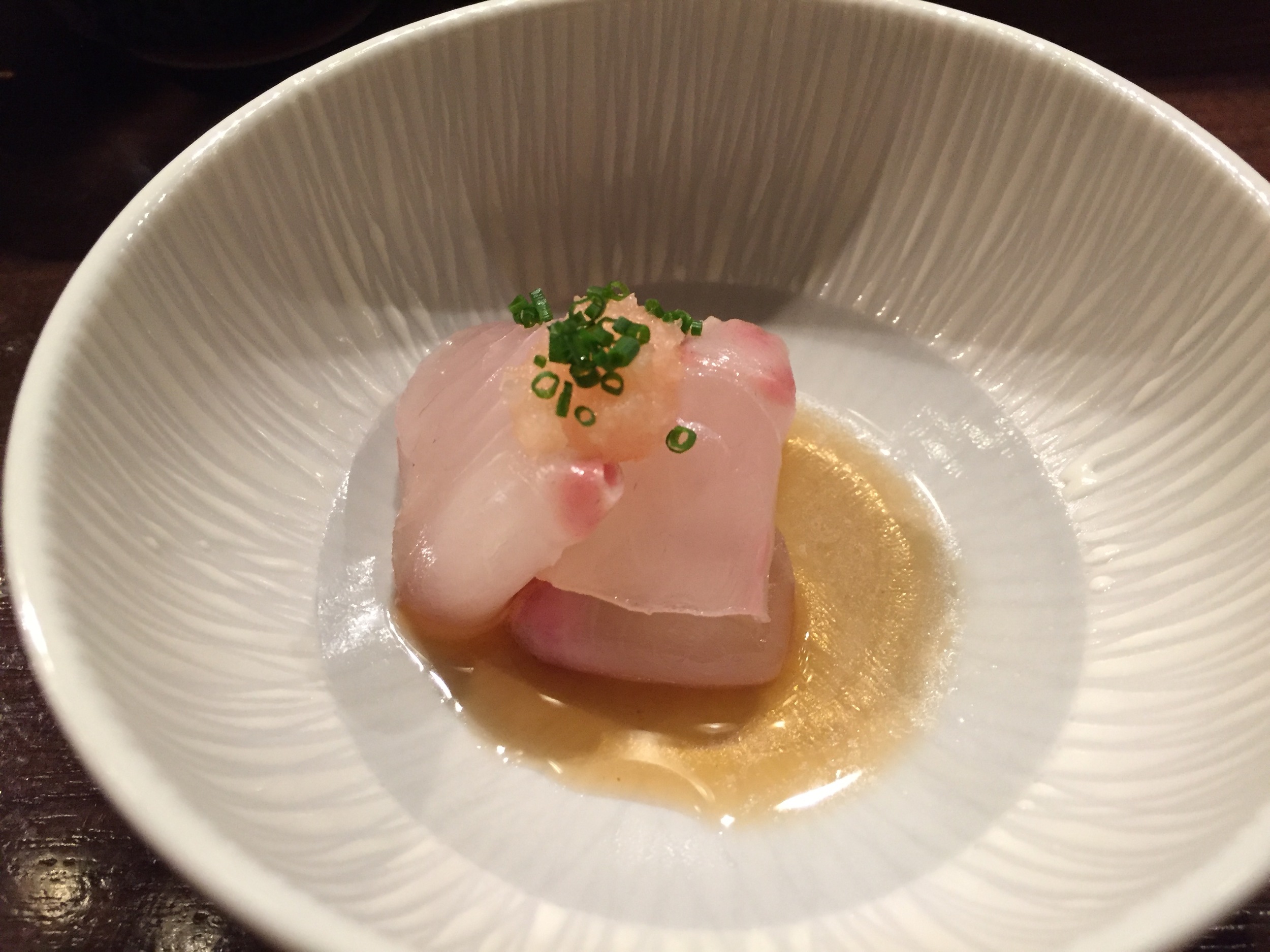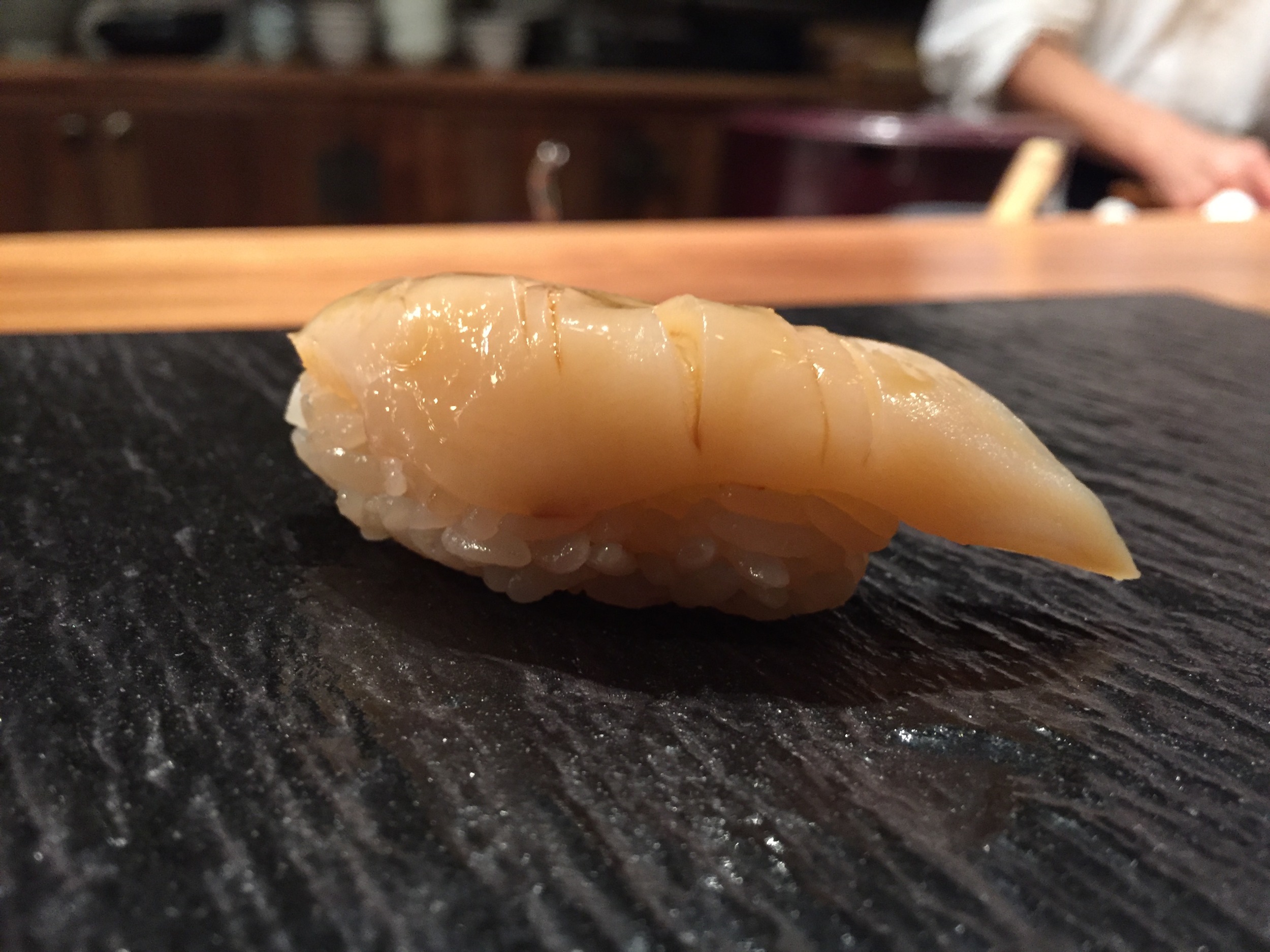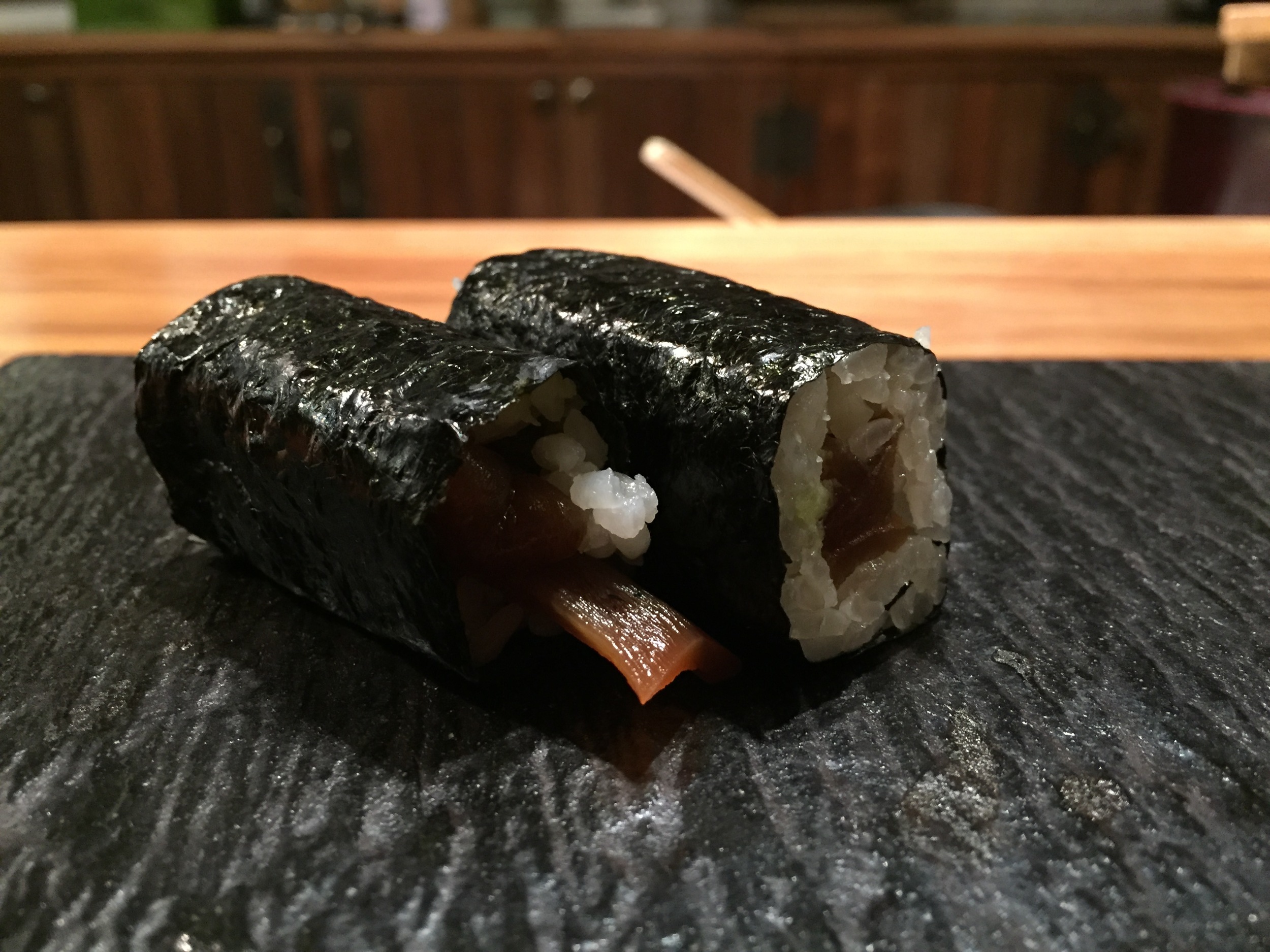- Cost: $165/person, before drinks, tax, tip
- Size: 10 seats at counter, plus small dining room
- Style: Sashimi + sushi omakase
- Reserved: 2 weeks in advance
LA-style sushi, for various reasons, differs in a few peculiar (and sometimes subtle ways) from top shops on the east coast. The longer history of high-end sushi in LA results in a style with its own trademarks (blue crab hand rolls...) and less adherence to strict edomae tradition.
Q Sushi is thus notable in LA because it adheres quite closely to a traditional style. It is the transplanted shop of Hiro Naruke, who ran his own shop near Nogizaka in Tokyo until 2011 and was convinced by some LA lawyers to make the jump across the ocean. Hiro-san describes Los Angeles as "more relaxed", which seems obvious given the typical California attitude and the relative lack of high-end sushi competition, at least compared to the thousands of shops in Tokyo's 23 wards.
My meal started with a few tsumami-like sashimi dishes. These did not really stand out to me, with the exception of a charred shishito-garlic-miso paste that was served with grilled otoro. In general, I was not overly wowed by the neta, which was of very good but not "great" quality by US standards, and relied on more farm-raised fish with fewer seasonal items than you might expect in this price range. Certain pieces - such as aoyagi that was not fully cleaned, or kaki (oyster) konbujime that was dry and chalky - felt like missteps.
That said, overall the sushi was quite enjoyable. Certain traditional pieces such as engawa and kohada were excellently executed. It was clear special attention was paid to the shari, which was dry, quite firm, and has just enough punch from seasoning with akazu. The shari was not 100% consistent throughout the meal, but always provided great balance to the neta.
It is clear the technique level at Q is quite high. Kasutera-style tamago was one of my preferred styles - fairly dry, fluffy, and just a hint of sweetness balanced by savory flavor. Hiro-san explained that this was because the batter is over 60% shrimp, which exponentially increases the cooking time required. Similarly, the housemade kanpyo was very well balanced between being crunchy, savory, sweet and just slightly tart.
I would like to make special note of Ruiz-san, Hiro-san's assistant. Ruiz-san is an LA-born half-Peruvian/half-Japanese whose culinary training comes from kaiseki resraurants in Kyoto. His nigiri, slicing skills, and overall care provided a very consistent experience to the shop's master. An assistant chef who can provide comparable experience to the head chef is sometimes quite difficult to come by in the US, but it is not a worry here.
As far as cost-value performance goes, Q is quite steep. The neta there is undoubtedly not of the highest tier yet its pricing is definitely in that range. That said, the level of technique is notable and destination-worthy, especially for visitors to LA.






















